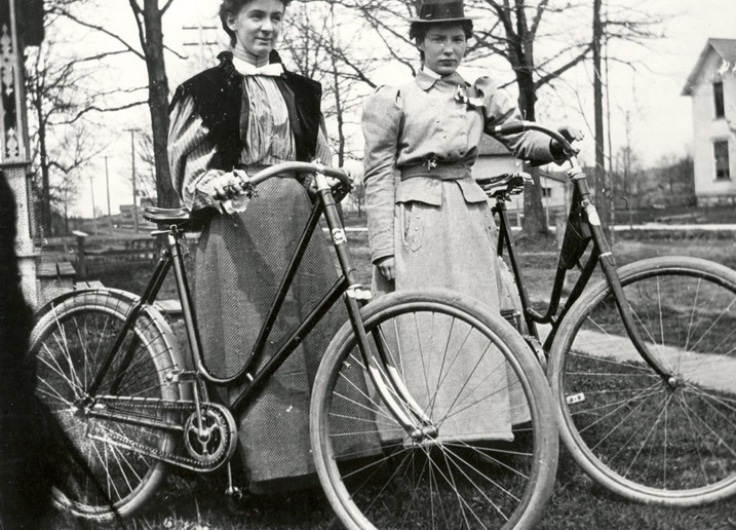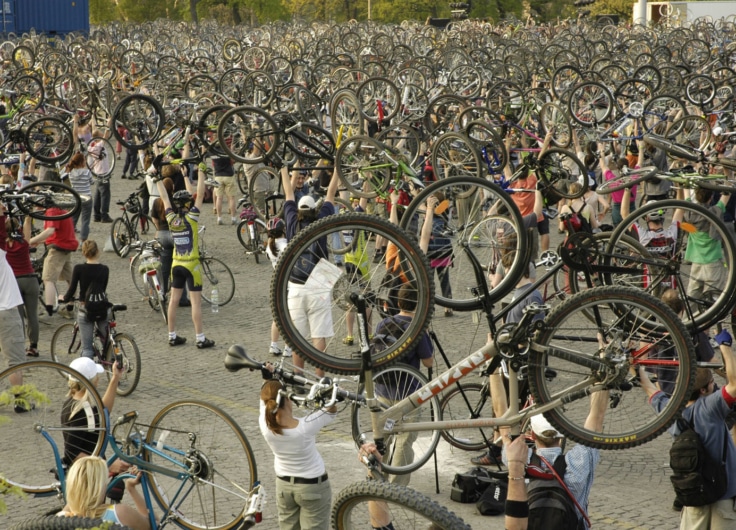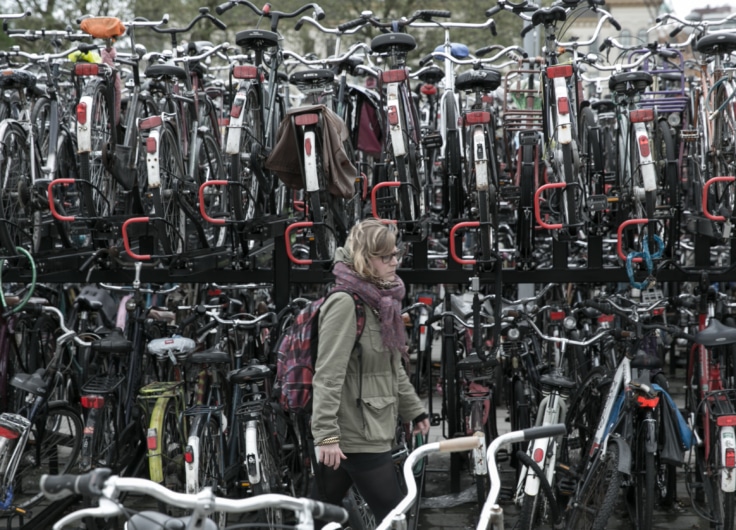Headwind, Tailwind. How the Bicycle Became a Dutch Symbol
What country do people associate the bicycle with? More or less everyone will spontaneously say the Netherlands. But the Dutch haven’t always been so mad about bikes. That close bond with cycling crept in quietly. A surprising look into the history of the bicycle land that is the Netherlands.
It’s summer 1906. Kees Rijk, a farmer’s son from Zeeland, is eleven years old when his father comes home from the market with a gleaming, innovative mode of transport. The two-wheeler turns out to be a true revelation for Kees. It gives him the opportunity to venture out into the world and broaden his horizons – an opportunity he’s very happy to take.
The memory of Kees on his two-wheeler was handed down with a benevolent smile to subsequent generations, including me as his granddaughter. It fascinated me that the bicycle, such an obvious mode of transport, had been a luxury and a source of wonder to my grandfather. I took a dive into the history of the bike and to my surprise discovered that the mode of transport so integral to the Dutch identity is in no way Dutch at all.
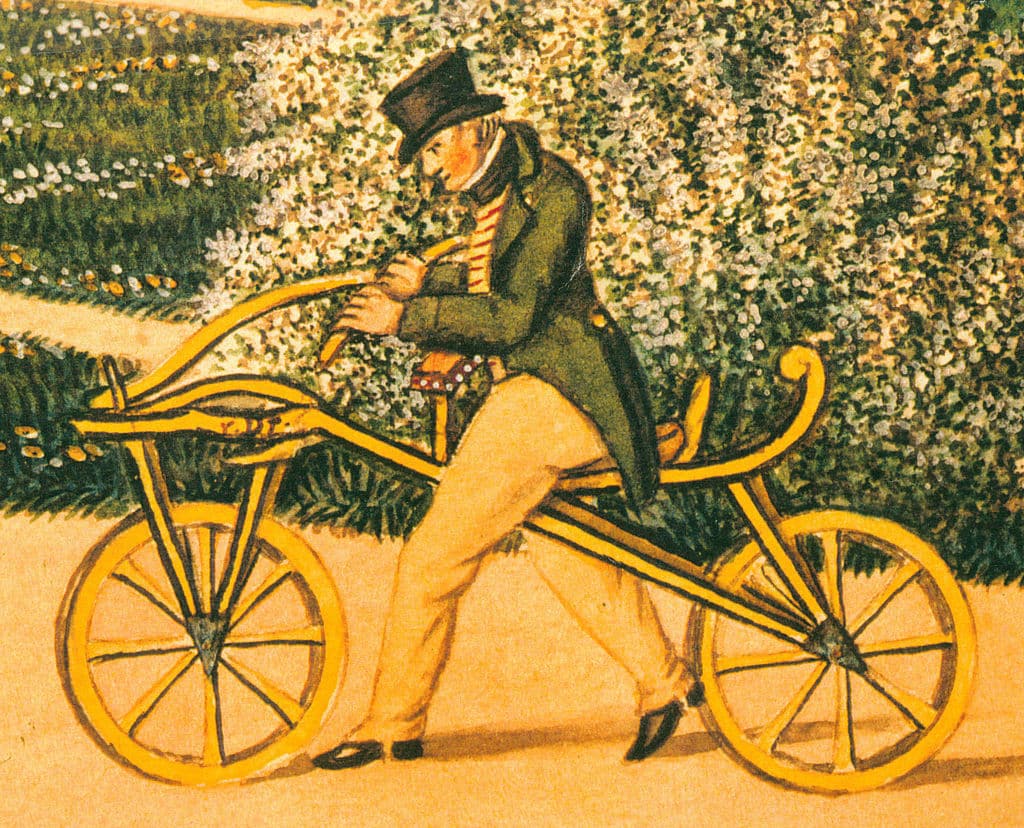 Karl Drais on his original Laufmaschine ('running machine'), later called the velocipede and draisine
Karl Drais on his original Laufmaschine ('running machine'), later called the velocipede and draisine© Wikipedia
In 1817 Karl Drais, a German, presented the first real bicycle, a wooden walking bike or Laufmachine with a manoeuvrable front wheel. The Netherlands was not yet ready for the novelty. The mode of transport mainly aroused surprise and fear in the population. The bicycle was also very expensive and only of limited use on the deplorable Dutch roads.
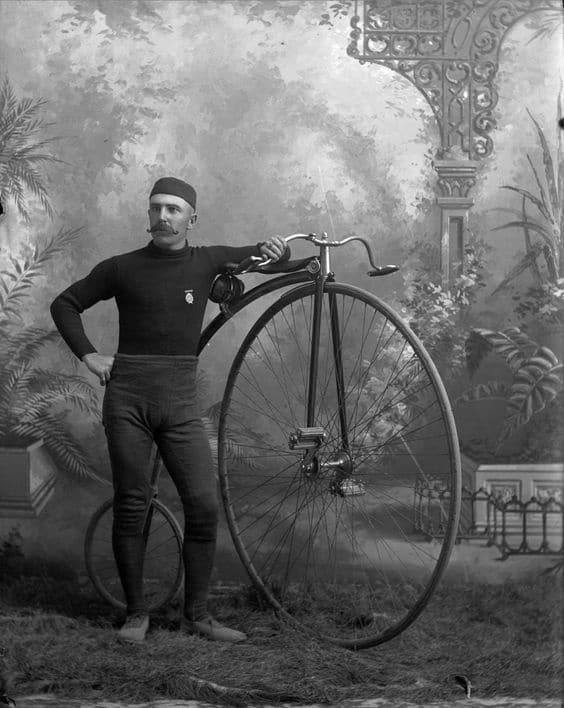 A man with a handlebar mustache poses with his penny-farthing, ca. 1890
A man with a handlebar mustache poses with his penny-farthing, ca. 1890New inventions fifty years later enabled the onward development of the bicycle. French blacksmiths attached pedals to the front wheel. French and English bicycle makers subsequently developed a lighter and stronger structure for the wheels. The era of the penny-farthing
had begun: the larger the front wheel, the faster the forward motion – but the less stable the road-holding. When a British engineer mounted a chain drive on the back wheel so that both wheels could be the same size, cycling became a good deal safer. Finally comfort levels were increased by an invention from Ireland: the pneumatic tyre.
Over a period of 75 years the bicycle was invented and developed without the Dutch ever coming across one. Only in the decades after that would the bike grow to be a national symbol, but even then it was to be a bumpy ride.
Armed with whips, catapults and batons
From 1870 the bicycle cautiously made its entrance into the Dutch landscape. Cycling was initially the preserve of wealthy young men. Gentleman largely cycled as members of clubs, the first of which was founded in 1871 in Deventer. In their own uniforms the cycling club formed a procession full of traditions with horn blowers playing a cycle march tune, a president, an opperjeneverbewaarder (upper guardian of the jenever, traditional Dutch gin) and finally a man who pulled exhausted riders forth with a rope. In this fashion the members made journeys of fifty kilometres through the countryside. Freedom, friendship and sportsmanship were what the bicycle brought them.
City dwellers became somewhat accustomed to this phenomenon, but in the countryside the cyclists were viewed as a danger and a disruption to rural peace. Cyclists on village roads invoked aggression. Dogs were sent after them and when passing a horse and cart they could expect a crack of the whip from the driver. The cycling pioneers didn’t take it lying down, arming themselves with whips, catapults and batons.
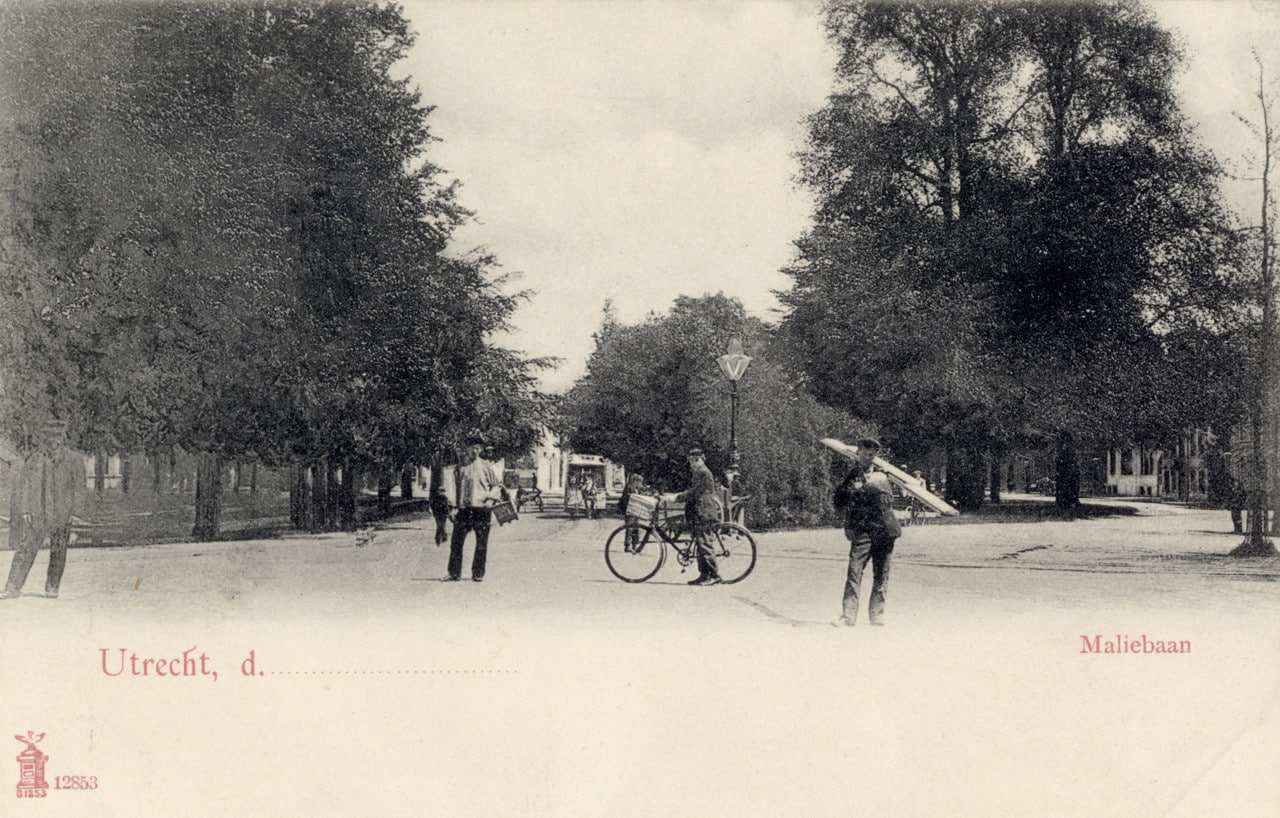 Maliebaan in Utrecht, the first bicycle path in the Netherlands, ca. 1900
Maliebaan in Utrecht, the first bicycle path in the Netherlands, ca. 1900© Het Utrechts Archief
Local authorities drew up measures to protect other road users from the clumsy cyclists. Certain streets and even entire villages were declared out of bounds. This restriction on the cyclists’ freedom spurred them on to set up a national association in 1883 with the aim of promoting cycling. It was established on the Maliebaan in Utrecht, where two years later the first official cycle path was laid down by replacing the cobblestones of the pavement with gravel. The path formed the start of what eventually became a cycle path network of as much as 37,000 kilometres. The cyclists’ association was named ANWB (Algemene Nederlandse Wielrijders Bond, the general Dutch cycling association) and still plays a prominent role in the organisation of traffic in the Netherlands today.
Cycling causes infertility!
The enthusiastic pioneers on wheels inspired public services. For instance in 1888 a Korps Vrijwillige Militaire Wielrijders (corps of voluntary military cyclists) was set up to supply reconnaissance and courier services, and later also for the infantry. The fire service obtained a special service bike, with all kinds of firefighting equipment, so that they could be on location quickly, and the postal services were won over and deployed the efficient mode of transport for their postal workers.
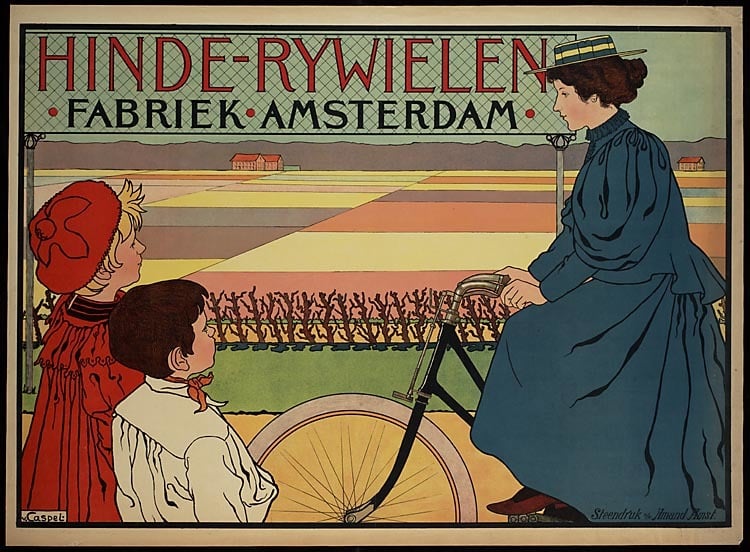 Poster for an Amsterdam bicycle manufacturer, between 1896 and 1898
Poster for an Amsterdam bicycle manufacturer, between 1896 and 1898© Wikipedia
Seeing leads to doing. Due to more people cycling – even if they were mainly rich men and public officials – the exclusivity of the pursuit was somewhat reduced, as was the price, so that demand grew, prices dropped again, and so on, in small steps. The mode of transport brought sportsmanship, mobility and emancipation – between labourer and elite, between man and woman.
Initially it was impossible for women to cycle. They were literally impeded by their long skirts, dictated by fashion. The obligatory corset came at the cost of their health, encroaching on breathing and liver, but cycling – the medics declared – was far more detrimental to health. It would lead to infertility in women. Moreover cycling would demand too much strength from a woman and disfigure her: the leg muscles would develop to extremes. And then there was the fear that women once they had experienced the freedom of cycling would take a more relaxed attitude to other desirable norms and values. A few stubborn women nevertheless mounted the bicycle and, after a period of ridicule and scorn, mores gradually changed, in part due to new medical insights.
The bicycle encouraged awareness of one’s own capabilities and that in turn reinforced the women’s movement in its philosophy
The journeys the women made contributed to their autonomy: they could determine for themselves which way they wanted to go, which fitted in with the essence of the emancipation movement. Around the turn of the century, women were fighting ever more openly for their right to full participation in work, for higher education and for the right to vote. The bicycle encouraged awareness of one’s own capabilities and that in turn reinforced the women’s movement in its philosophy.
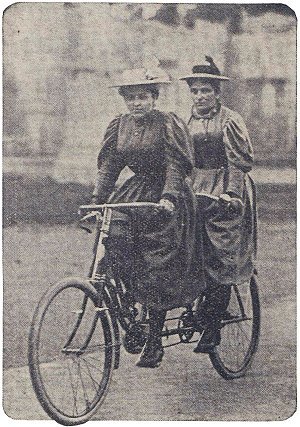 Two Dutch ladies on a tandem, late 19th century
Two Dutch ladies on a tandem, late 19th century© Algemeen Handelsblad, 27 June 1933
The resistance which a cycling woman invoked decreased around the turn of the century, but there was still the other impediment: clothing. Progressive women replaced their skirts with wide culottes when they went cycling and that was seen as rather shocking; this was an era in which a glimpse of ankle was seen as scandalous, and cycling in trousers revealed a length of feminine lower leg. But due to the pioneering cycling women, a new synergy arose, this time between the bicycle and fashion. As more and more women started cycling, and increasingly often in practical culottes, people became accustomed to it. Slowly but surely, trousers became accepted as the clothing women wore when cycling, and in the wake of that men became accustomed to seeing women in culottes or trousers even when not on their bikes.
Sit up straight, look stately!
At the beginning of the nineteenth century there were around one hundred thousand bikes in the Netherlands, which translated to one bike per 53 residents. Besides private and official use, the bicycle, particularly the bakfiets or cargo bike, became popular among shop keepers. Heavy, awkward loads could be transported faster over longer distances with little effort or cost. Specific types of bakfiets were introduced for the transport of bread, milk, furniture and waste. The number of bikes in the Netherlands doubled in four years.
Bikes, horse-drawn carts, handcarts and trams all drove along the same narrow village streets and caused chaotic jams and dangerous situations. For the sake of traffic safety in 1905 the first Motor and Bicycle Law was passed and the ANWB provided warnings at steep slopes and signposts at crossroads. Spurred on by the prevailing social efforts for law and order, the cyclists’ association also drew up a code of conduct: the maximum cycling speed was fifteen kilometres per hour, and a journey should not be more than eighty kilometres and should result in relaxation and the acquisition of knowledge. Cyclists should sit up straight in a stately fashion on a sound city bike and not lean forward in race position. Cycle races on the road – with hunched over, sweating, panting cyclists – were a source of indignation.
Cycle races on the road – with hunched over, sweating, panting cyclists – were a source of indignation
Sporting riders were enthusiastic about the small-scale cycle races organised on the public roads, but citizens and country people wanted nothing to do with the disreputable hubbub and complained about the danger. The racers were thus banished to special cycle tracks, the velodromes. The first velodrome, three hundred and thirty metres long, was opened in 1885 in Nijmegen and proved a great success. Soon all large cities had a velodrome. Cycle racing in the Netherlands remained restricted to closed cycle tracks, creating conditions substantially different from other European countries. Cycle classics such as the tours in France, Belgium and Italy never developed. The organisation of the Tour de France initially saw little promise in cyclists from a country without mountains and road races and prohibited participation. Only thirty-three years after the first Tour, in 1936, did Dutch cyclists first compete.
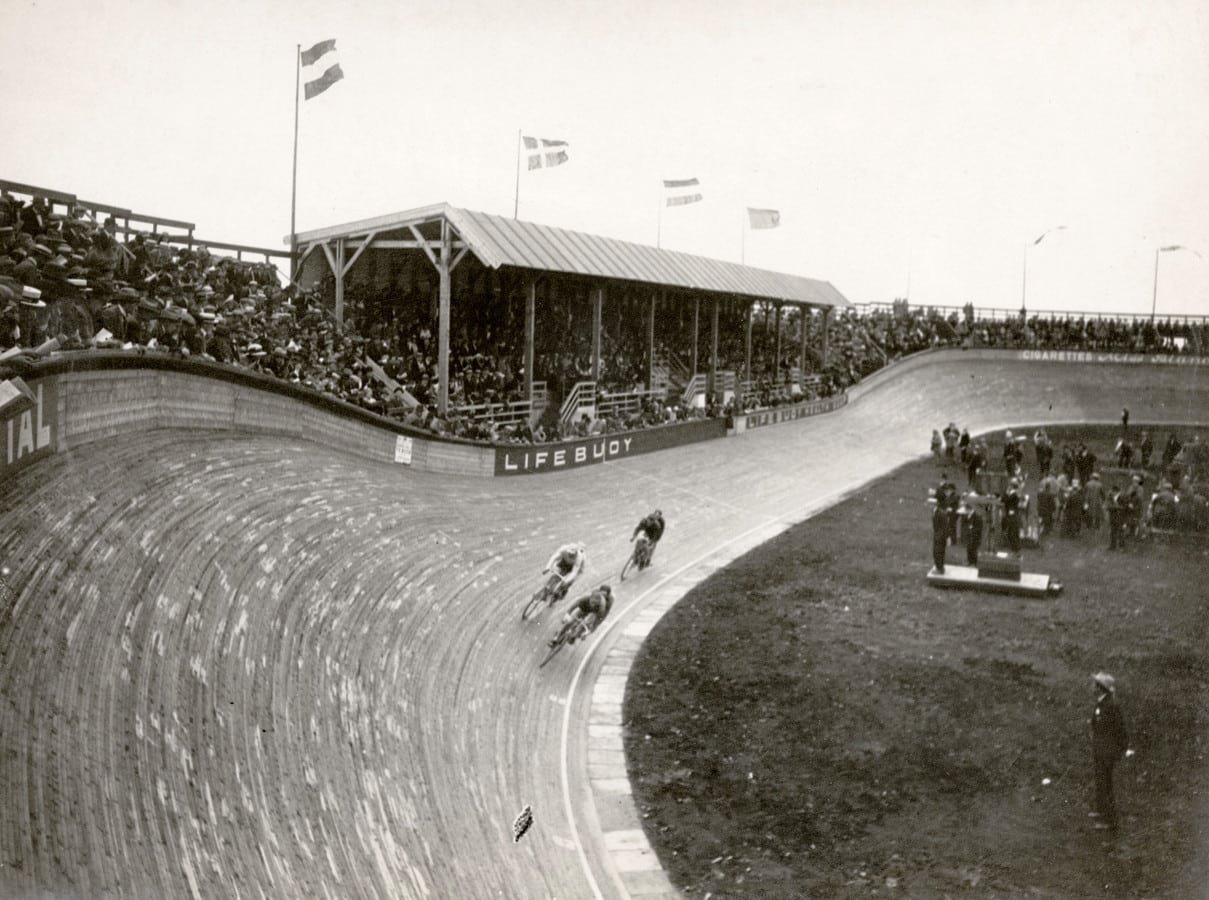 The veldrome of Rotterdam in 1923
The veldrome of Rotterdam in 1923© Nationaal Archief/Collectie Spaarnestad/Het Leven
Queen Wilhelmina on her bike
Due to its flatness the Netherlands was ideal for ‘ordinary’ cyclists. In the first two decades of the twentieth century cycling made every individual mobile and due to constant technical improvements became ever faster and more comfortable. The bicycle’s recreational function broadened, also because the number of days off increased. Cycle holidays with a tent became popular. Initially spending the night outdoors was unregulated. Cyclists sought out a suitable spot for themselves to put up their tent. The first official Dutch campsite opened in 1925 and more soon followed.
In the cities the proportion of traffic taken up by bicycles was enormous: around eighty to ninety percent
In the mid-1920s the Netherlands had around thirty thousand cars, thirty-six thousand motorbikes and two million bikes. The society’s mobility changed radically. The carts and wagons disappeared and people moved en masse to places ever more distant for work, education or recreation. In the cities the proportion of traffic taken up by bicycles was enormous: around eighty to ninety percent. That popularity was in part due to the status of public transport. Due to densely built up areas the buses and trams could not reach all locations. The bike offered results on narrow streets and bridges. With the price dropping still further and wages rising, by now one in four citizens owned a bike. In other countries the social status of the bicycle fell in this period, the well-to-do moving to motorised transport in order to distinguish themselves from the cycling masses. In France, Germany and England the car industry grew. The two-wheeler became the mode of transport for labourers and others who couldn’t afford a car, but not in the Netherlands. There the bicycle had by now been so assimilated that it no longer had anything to do with status. The royal house was an important ambassador for it.
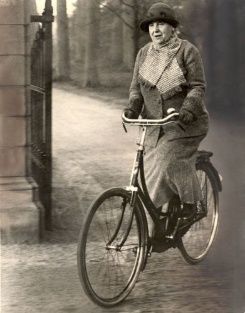 Queen Wilhelmina on her bike
Queen Wilhelmina on her bikeIn 1897 Queen Wilhelmina, then still a minor, saw a bicycle for the first time. She very much wanted to ride it, but the government forbade it because the risk of infertility must be avoided at all times. A year later when she succeeded to the throne, she overturned the prohibition, but promised her government that she would not appear in public on a bicycle. Thirty years later the queen was recorded by a patient photographer on her bike. The photo went around the world and established the reputation of the Netherlands as a cycling nation. In 1935 when her daughter Princess Juliana presented her fiancée Bernhard on a tandem – she in front, he behind – the image was once again reinforced. For the current generation of princesses cycling is as normal as for any other child.
Not just a means of transport
In 1940 there were around four million bikes in the Netherlands among a population of eight million citizens. During the Second World War the Germans claimed the bicycles in the Netherlands for the manufacture of weapons. The bicycle supplies in factories and among the wholesalers and retailers proved insufficient, so citizens were asked to hand in their bikes in exchange for a compensation equivalent to the price of a new bike. However, no one voluntarily gave up their bike. The occupier then seized bikes from garages, races, the street and houses at random. Anyone who escaped with a bike risked a prison sentence of half a year or a thousand-guilder fine.
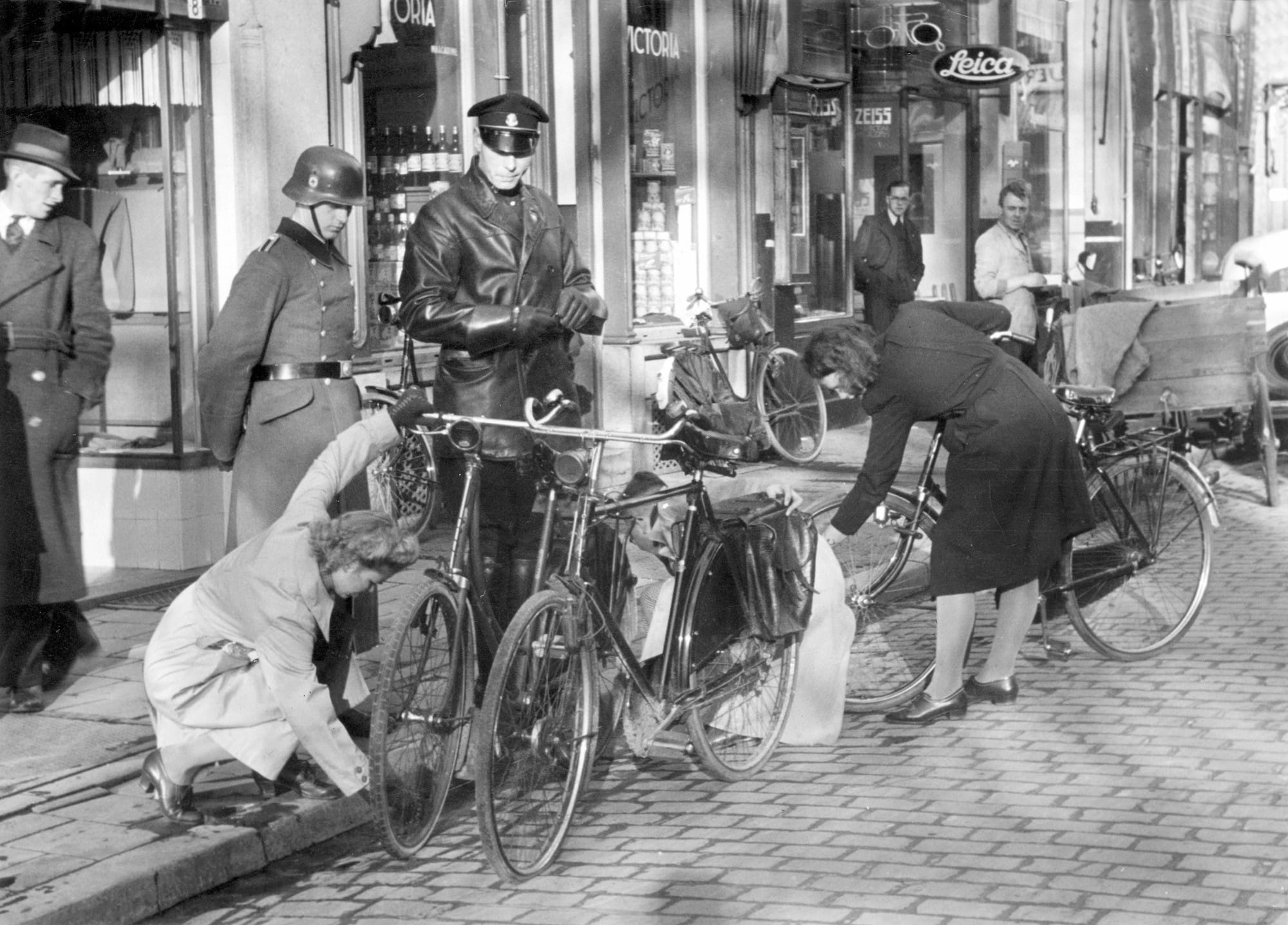 During the Second World War the Germans claimed the bicycles in the Netherlands for the manufacture of weapons.
During the Second World War the Germans claimed the bicycles in the Netherlands for the manufacture of weapons.© Nationaal Archief / Collectie Spaarnestad
In 1943 the Netherlands had only two million bikes left. The remaining bikes were faulty and really unrideable with their wooden tyres, but proved their use as beasts of burden during the periods of famine in the final years of the occupation. On liberation in 1945 the Netherlands was sadly lacking in bicycles. An enormous need for the vehicles arose – the wind in your hair and the choice to take any direction you desired was synonymous with ultimate freedom. Dutch cycle manufacturers restarted production and under the Marshall Plan bikes arrived on a grand scale from allied countries. The Netherlands was soon back on the move. In 1947 more than half of all commuters took up cycling again.
From the 1950s the value of the bike fell. After the reconstruction, the Dutch were more prosperous and opted for luxurious consumer products such as televisions, washing machines, motorbikes and cars. Theft of bicycles also increased, so people preferred a second-hand bike to a conspicuously new one. In 1965 the anarchist protest movement Provo introduced the Witte Fietsenplan (White Bike Plan), to eradicate theft. There were to be free bikes in the capital city, without a lock, as communal property. Anyone could use the two-wheelers and leave them for the next person. After a failed test the plan was never realised, but it planted the seed for the current communal bike systems such as the ov-fiets in stations and the swabfiets popular among students.
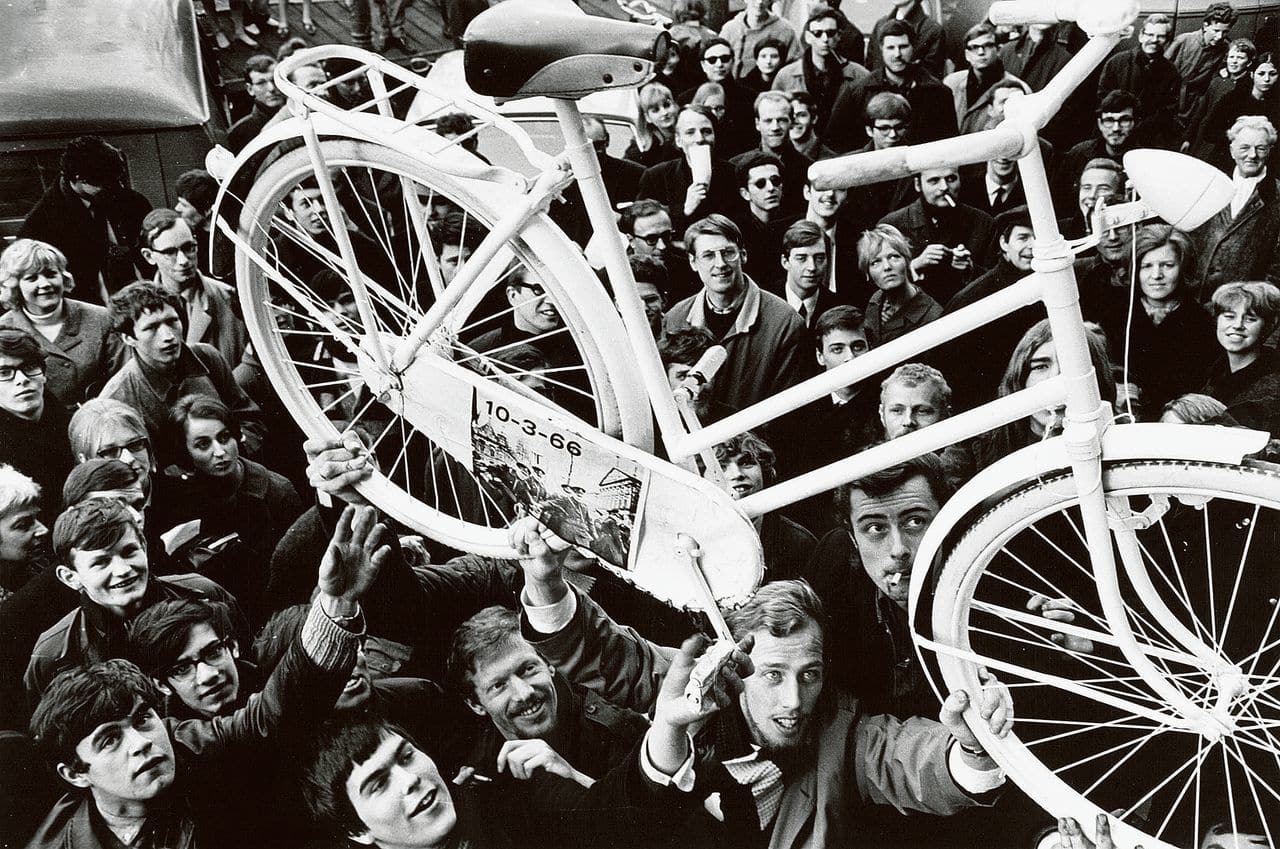 Provo's with a white bike
Provo's with a white bikeStill from the movie 'Rebellious City: Provo in Amsterdam'
Due to social and technological developments, the bike continues to acquire new forms and functions. The Dutch now own on average 1.3 bikes per person and make 300 cycle journeys a year. For each period of life they use a different bike: from three-wheeler to e-bike. And with each bike they broaden their horizon – headwind and tailwind. Just as my grandfather Kees once did, and I continue to do. The bike in the Netherlands is much more than an obvious choice of transport. It’s the symbol of freedom and democracy.


